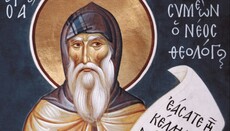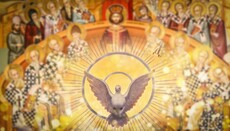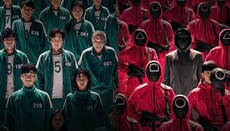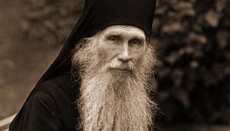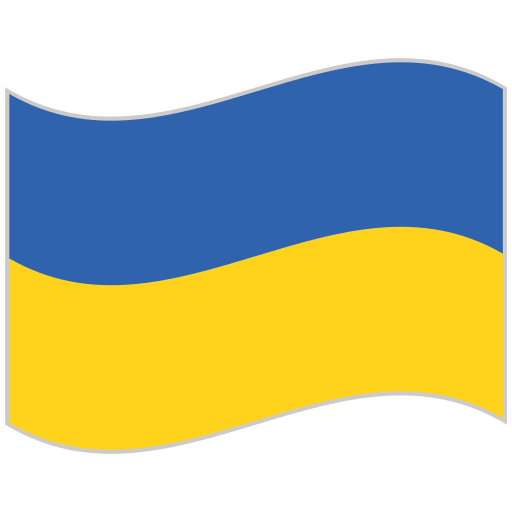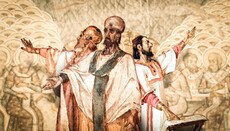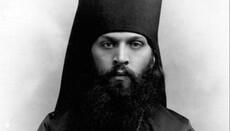VII Ecumenical Council. Part 1. The Triumph of Iconoclasm
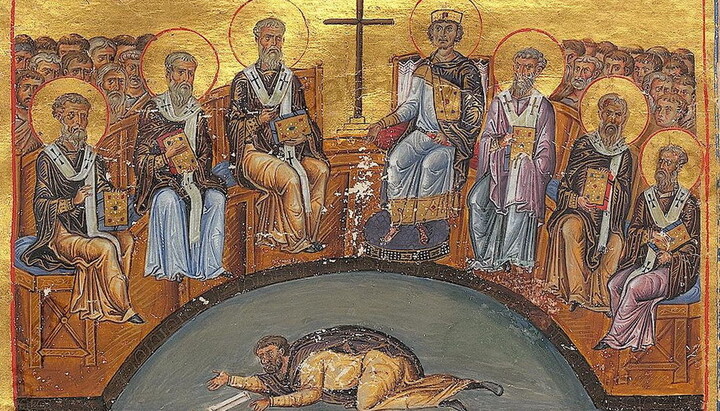
The VII Council confirmed the veneration of icons and condemned iconoclasm. However, the path to the establishment of Orthodoxy was very long, and the triumph of Orthodoxy was preceded by the triumph of iconoclasm.
When studying the historical events of that era, one cannot avoid drawing parallels with our time. Some aspects of the iconoclastic persecutions and the current persecutions against the Ukrainian Orthodox Church are very similar. Again, in the time of the VII Ecumenical Council, both iconoclasm and icon veneration became highly politicized religious issues. As the wise Solomon wrote: "What has been will be again, what has been done will be done again; there is nothing new under the sun" (Ecclesiastes 1:9).
Religious preconditions for iconoclasm
From the very birth of the Church of Christ, there were both supporters and opponents of icon veneration. In the Jewish environment, from which the first Christians came, there was a prohibition on images of the true God, and images and statues of pagan gods fell under the second commandment: "Thou shalt not make unto thee any graven image." These centuries-old prohibitions and rules undoubtedly influenced the early Christians.
This does not mean that Christians rejected the possibility of depicting Jesus Christ, the Theotokos, and the saints but they approached it with caution. Moreover, the Church itself, existing semi-legally and often subjected to various persecutions, was not conducive to the flourishing of iconography.
From ancient times, Christians depicted various symbols of Christ and Christianity, such as the cross in various forms, a ship, a fish, a dove, and others. Less frequently, – the images of Christ, the Virgin, and the saints.
According to tradition, the first icons of the Most Holy Theotokos were written in the mid-1st century. The earliest known documented mentions of the veneration of icons and the earliest wall iconographic depictions date back to the 2nd century.
In the 3rd century, the custom of depicting not only them but also various scenes from biblical history and the martyrdom of saints became fairly widespread. By the 4th century and later, saints like Basil the Great, John Chrysostom, Theodore of Cyr, Gregory of Nyssa, and others referred to such depictions as familiar and accepted practices. However, some prominent hierarchs of that time opposed icons, arguing that it was impossible to represent the Divine in a material way.
For example, when Constantine the Great's sister, Constantia, wished to have an icon of Christ, Eusebius of Caesarea wrote to her: "… we are taught that His flesh was dissolved in the glory of the Divinity, and that the mortal was consumed by life... So, who is capable of depicting the one who radiates and emits brilliant rays of glory and dignity with dead, soulless paints and shadows?"
There are written works defending the use of icons, which indicates that there were also those who fought against them.
Monophysitism, which was quite widespread in the East, inherently leaned toward denying the possibility of depicting Christ. The Monophysites taught that in Christ, the Divine nature engulfed the human one, so Christ should not be depicted in human form.
However, denying the very possibility of depicting the Divinity or even Its manifestations in the created world was not the main problem. Theological errors could be fought with theological arguments. A much more serious issue was the abuse of icon veneration, in essence, the pagan attitude toward icons and sacred images.
The broad masses of people who joined the Church after it became a state church brought with them this pagan understanding of what an icon was and in what forms the veneration of icons was permissible. Not only the common folk but also the elite often treated icons as independent sacred objects, in simpler terms, as idols.
It came to absurdity. Icons were taken as godparents during baptisms and placed under the Holy Sacraments of the Body and Blood of Christ before communion.
Some priests served the liturgy on icons instead of the altar, not because there was no possibility of serving on the throne, but due to the false veneration of icons. Others scraped paint off icons and added it to the Chalice with the Holy Mysteries. Wealthier individuals donated icons to churches and only honored those, ignoring others. This led to a pagan approach to icons: "our icon" – "not our icon".
Unfortunately, this understanding is still not eradicated today. Consider the two phrases: "Kazan Icon of Our Lady" and "The Icon of Our Lady of Kazan." If you don't see the difference, you should learn more about true icon veneration.
This all created the preconditions for the emergence of iconoclasm. A necessary and justified correction of the incorrect pagan veneration of icons easily slid into the rejection of icons altogether and the persecution of all icon veneration, both correct and incorrect. And when political circumstances demanded it, persecutions against icons became inevitable.
Political preconditions for iconoclasm
At the end of the 7th century, Islam emerged and immediately demonstrated its political and military power. The Byzantine Empire faced another serious threat to its existence. Islam was hostile not only to icons but also to any images of people. This led, on the one hand, to intensive debates within the Church about the legitimacy of depicting the Lord and saints, and on the other hand, to the desire of Byzantine authorities to placate, if not the Muslims themselves, then those peoples considering joining Islam, by rejecting the veneration of icons.
Thus, for the umpteenth time in Church history, Orthodoxy was sacrificed for political gain. Authorities hoped to gain political dividends by rejecting true doctrine. However, history shows that such trade-offs are never beneficial, even in a worldly sense, let alone in eternity.
However, one should not think that the authorities always acted foolishly and recklessly. The paradox is that often the persecutors of the Church were quite wise rulers, effective managers (as we would say today), defenders of the state, and humane legislators, etc. They did much good and right for their people and state. But at the same time, they persecuted the Church and entered history with a negative legacy.
On the other hand, within the Church, there were significant troubles and abuses that threatened the very existence of the state. The fight against them almost always turned into a struggle against the Church and religion itself, as in the case of iconoclasm.
When the Church transformed from a persecuted one into a state institution, it amassed immense material wealth and became one of the largest landowners in the empire. Monasticism, which initially arose from the desire to escape the world and dedicate life to repentance, became a comfortable and profitable way of life. Emperors and other wealthy individuals built monasteries, donated large sums of money to them, and surrounded monks (especially the senior members) with honor, allowing them to become influential figures in the economy and politics.
Often it was this, and not the desire for a ‘fasting life’ that became the incentive for entering a monastery. Monasticism increased in number, but how many of those who joined were true monks in spirit?
Only God knows, but historical monuments testify that many monks entered monasteries for career or material reasons. The large number of monks created a shortage of both work force and soldiers for the army, threatening the defence of the state from external threats. Monks often held high governmental positions, and their actions were frequently detrimental, which negatively affected the Church and sparked public protest.
For example, in 695, a certain Abba Theodotus, the Minister of Finance, introduced such unjust taxes and collected them so cruelly that he was murdered by the common people just one year later, in 696. In 715, the commander-in-chief of the army was a deacon of the Hagia Sophia, named John, who was killed by soldiers, likely for good reason. In the conspiracy against Emperor Justinian II in 696, two monks from Constantinople were key figures.
As we mentioned earlier, the struggle to remove such troubles from the Church became a fight against the Church itself and religion. The desire to limit the number of monks and their influence in politics turned into a struggle against monasticism. Since icon veneration was deeply rooted in monastic circles, the fight against monasticism also meant fighting against icon veneration.
One could say that iconoclasm was raised under the banner of fighting against the influence of monks and other "clericalism".
Emperor Leo III the Isaurian
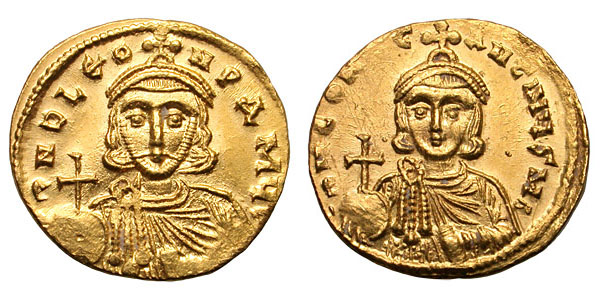
Leo III the Isaurian. Photo: wikipedia.org
In 717, Leo III the Isaurian became the Byzantine Emperor and founder of the Isaurian dynasty. He was Isaurian or Armenian, from a region where iconoclastic sentiments were widespread. Leo was a usurper, having taken power from the weak Emperor Theodosius III. However, this was the case with nearly all Byzantine emperors.
Upon his ascension, Leo saved the empire from a major Arab invasion. According to some historians, if it hadn't been for him, Constantinople would have fallen under Muslim rule 700 years earlier than it actually did (referring to the fall of Constantinople to the Turks in 1453).
In later years, the Arabs periodically attacked Byzantium but without much success; and in 740, Leo decisively defeated them in the Battle of Akroinon.
During his reign, Leo reorganized the army, making it more modern and effective, implemented necessary economic reforms, and, if not for iconoclasm, would have entered history as an outstanding emperor and perhaps even been canonized as a saint (which the Greeks love to do).
But he started the persecution of icons, and despite his merits to the empire, the Church judged him harshly: "To the first most wicked iconoclast, even more so a Christ-hater, a harmful beast, deceived by the two dogs, the Jews, a servant of demons, an anti-Christian warrior against God's Church, a tormentor, not a king, Leo the Isaurian and his false patriarch Anastasius, the persecutor of Christ's flock, not a shepherd, and their accomplices – anathema!”
Through his efforts in saving the empire from the Arabs, Leo III earned himself respect both within and outside the state. He carried out his actions against icon veneration relying on this authority. Similarly, the current President of Ukraine, Volodymyr Zelensky, gained great authority with his courage when he did not leave Kyiv despite the real threat to his life in the early days of the war, and became the main symbol of the invincibility of the Ukrainian people in the face of the enemy. But, like Leo III the Isaurian, he decided to use his authority against the Church. However, the Byzantine emperor did not resort to any hostile actions immediately; it was only in the tenth year of his reign.
In 726, a volcanic eruption occurred to the northwest of the island of Crete. The eruption was quite powerful; and as a result, a new island formed. The reason to begin the persecution of icons was, of course, a far-fetched one, but in the absence of any other justification, it was deemed acceptable.
Similarly, the current phase of persecution against the Ukrainian Orthodox Church began with the innocent singing by pious women of “Mother Rus is awakening…” at the Kyiv-Pechersk Lavra. Leo the Isaurian gathered his Secret Council (similar to the National Security and Defence Council) and declared that the volcanic eruption was God's anger for the veneration of icons, and therefore, measures must be taken.
Initially, Leo approached the matter fairly gently; the icons were not removed but simply raised higher in churches so that the people would not touch them. In the Church of Hagia Sophia, the icons were not touched throughout Leo’s reign. However, serious clashes were not long to come.
The authorities decided to remove the image of Christ from the gates of the Palace Square, known as "Chalke Gate". It was a bas-relief of the Saviour crucified on the Cross. Since the Cross itself was venerated by the iconoclasts, they decided to simply chop down the bas-relief with an axe. But as soon as one of the officers began chopping the image, the outraged crowd pulled him from the ladder and beat him to death along with several soldiers. The authorities did not remain silent and executed nine people, including a certain monk Theodosius.
This incident became known in the West, prompting Pope Gregory II to write a letter to the emperor in defence of icons and to convene a Council in Rome in 727 to condemn iconoclasm.
Patriarch Germanus I of Constantinople opposed the new state policy of iconoclasm. In 729, Emperor Leo the Isaurian invited the patriarch to his court and tried to persuade him to join the iconoclasts. Similarly, the head of the Ukrainian Orthodox Church, Metropolitan Onuphry, was also reportedly kindly persuaded to join the Orthodox Church of Ukraine. In both cases, the response was a firm refusal. However, Patriarch Germanus could not withstand the pressure, resigned his ministry, and retired.
After him, by imperial decree, a certain Anastasius, who had long expressed a desire to become patriarch, was elevated to the patriarchal throne. Anastasius had been the protosyncellus (secretary) of Patriarch Germanus for a long time and was familiar with the inner workings of the Byzantine court. Well, Metropolitan Volodymyr (Sabodan), the late Primate of the UOC, also had a secretary...
As patriarch, Anastasius immediately issued a circular letter, giving the church authorities the go-ahead to fight against icons. This letter was accepted by all the bishops of Constantinople but was sharply condemned by Pope Gregory II.
He wrote to Anastasius that he was no "brother and concelebrant" and accused him of heresy, demanding repentance and a return to the Orthodox faith under the threat of excommunication. Not long ago, the head of the Orthodox Church of Ukraine attempted to join the newly appointed Serbian Patriarch Porfirije as “brother and concelebrant” but received a similar response. Besides Pope Gregory II, the high-ranking official of the Damascus caliph, John of Damascus, also opposed the persecution of icons, writing “Three Apologies Against Those Who Attack the Divine Images”.
Constantine V Copronymus and the iconoclast Council
In 741, Emperor Leo III the Isaurian died, and his place was taken by his son, Constantine V Copronymus. His nickname “Copronymus,” which translates as “dung-named”, was given for one of two reasons: either because he defecated directly in the baptismal font, or due to his pathological love for horses, which went so far that he would smear himself with horse manure and tell everyone that it was very beneficial for health.
The church historian A. Kartashev describes his moral character as follows:
"...no one can deny his barbaric cruelty and sadism in religious persecutions, as well as his personal debauchery. He was a sodomite, who ended his days in the most loathsome disease. At Constantine's orgies, there was present (for the sake of sacrilege) his drinking companion, a certain monk who had abandoned his monastic vows, known by the nickname της χαρας παπας – ‘the cheerful priest’. Yet, like his father, Constantine was a very effective ruler, a talented military leader, and enjoyed immense authority in the army. Under his rule, the wealth of the empire and its citizens improved significantly. But he was a far more bloody persecutor of the Church than his father, and his historical evaluation is as follows: 'To this lion-like wicked beast (i.e. Leo III), the son, the second iconoclast, the vile tyrant of his lineage, not a king, a blasphemer of the Most High, a church reviler, a cursed man, Constantine Copronymus and his accomplices – anathema.'"
After ascending the throne, Constantine V immediately experienced an attempted rebellion. Artabasdos, the commander of the Byzantine army in Armenia, seized Constantinople during Constantine’s absence, declared himself emperor, and ruled for almost two years. He restored the veneration of icons, thereby drawing both iconoclasts and icon veneration supporters into bloody political conflicts between the factions in Constantinople. From then on, if one faction prevailed, icon veneration was restored; if the other prevailed, persecutions flared up with even greater intensity.
Patriarch Anastasius, who wavered with the party line, immediately declared Constantine V a heretic and supported icon veneration.
But in 743, Constantine returned and, after a brief siege, captured Constantinople. Artabasdos and his sons were blinded and sent into exile in the monastery of Chora on the outskirts of the city. Patriarch Anastasius had to change his position once again. Strangely, he remained patriarch, though he had to endure a terrible humiliation. He was publicly flogged, stripped naked, and driven round the hippodrome, sitting backward on a donkey. After such humiliation, which impacted the entire Church, he became an even more obedient tool in Constantine’s hands.
In 754 (according to other sources, in 753), Emperor Constantine V convened a council, which hastily declared itself the Seventh Ecumenical Council. This was a blatant fabrication, as there were no representatives from the Roman, Antiochian, Alexandrian, or Jerusalem Churches, though the number of bishops was considerable – 338 in total.
The Council lasted quite a long time, from 10 February to 8 August. It was unremarkable except for the fact that it read out deliberately forged writings of the Holy Fathers. The final decree of the Council was rather lengthy, but its essence boiled down to the following:
“Under the guise of Christianity, the devil introduced idol worship, persuading Christians through his false teachings not to renounce creation but to worship it, to honour it, and revere the creature as God under the name of Christ. <…> Therefore, being firmly instructed by the God-inspired Scriptures and the Fathers, and having established our feet on the rock of divine service, we all, endowed with the priesthood, in the name of the Holy Trinity, have come to one conviction and unanimously declare that any icon, made of any substance, as well as those painted with the wicked art of painters, must be cast out of Christian churches. It is alien to them and deserves contempt. <…> No man should dare to engage in such wicked and inappropriate work. If anyone dares, from now on, to create an icon, venerate it, or place it in churches or in their own home, or hide it, such a person, if he is a bishop, priest, or deacon, should be deposed, and if he is a monk or layman, he should be anathematised and be guilty before the royal laws, as he opposes God’s decrees and is an enemy of the ancestral dogmas.”
After the Council, the persecution of icons and icon veneration supporters became widespread and bloody. Historians compare it to the persecution under Diocletian in the early 4th century. Icon veneration supporters were tortured, killed, exiled, and deprived of property.
Since, as already mentioned, icon veneration was very strong in monastic circles, monks suffered the most during this persecution. Many were brutally killed, and thousands of monks and nuns fled beyond the empire’s borders. They were even safer in Muslim countries than in "Orthodox" Byzantium.
And all this was done with the blessing of the episcopate of the Constantinople Church and the Patriarch!
A very telling example of martyrdom is the well-known ascetic of the time, Saint Stephen the New. He was persuaded both with promises and threats to renounce icon veneration. He refused. Initially, he was accused of pronouncing anathema on the emperor, as well as of fornication with one of his spiritual daughters (similar to accusations of sodomy against the current bishop of Ivano-Frankivsk). Both accusations were clearly false and did not work.
Then, they resorted to provocation. A young official, George, was sent to Saint Stephen, who knelt at his feet and tearfully begged to be tonsured as a monk. At the time, the emperor had banned monastic tonsure. Stephen believed the sincerity of the young man and tonsured him. Three days later, George solemnly reported to the emperor about the tonsure.
The emperor came up with the idea of holding a whole theatrical performance “defrocking” (resembling the recent provocation in the Khmelnytsky Cathedral?). After that, the emperor sent soldiers to burn down Saint Stephen’s monastery and scatter his disciples. He himself was tortured for two years and ultimately stoned to death. To do this, schoolchildren were freed from lessons and brought out into the streets to throw stones at the "terrible criminal" (this was in a country that called itself Christian!). Familiar, isn't it?
In 775, Constantine V Copronymus died from a painful illness, and his son Leo IV the Khazar became emperor.
To be continued in the next publication.
